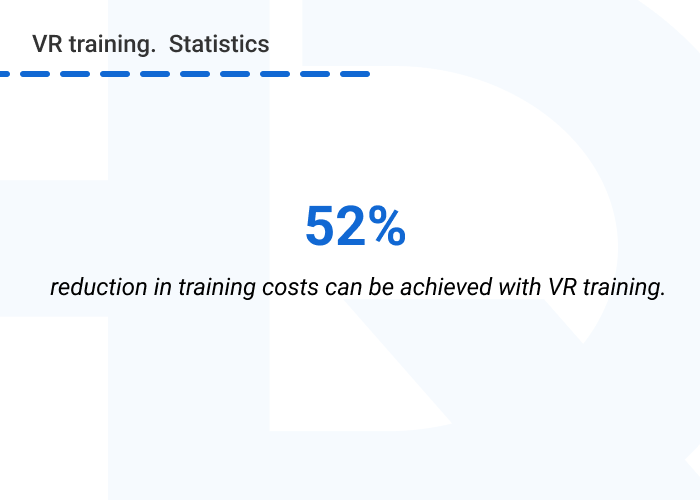1. Develop a customized learning management system (LMS)
2. Implement microlearning and mobile learning
3. Utilize free learning resources
Employee training is an essential investment to improve job performance and productivity, but it often comes with a hefty price tag. In the USA, companies spend about $101.8 billion a year on employee training.
By using advanced digital tools such as AR/VR, learning management systems (LMS), and virtual classrooms, you can reduce training costs without compromising quality. A Gitnux market data report proves that companies can get a 30x investment return when training their staff using digital tools.
In this blog post, we’ll explore four employee cost reduction strategies that can help businesses cut down on training expenses while still providing effective learning experiences.
1. Develop a customized learning management system (LMS)
2. Implement microlearning and mobile learning
3. Utilize free learning resources
Between instructor salaries, classroom rental fees, and the cost of learning materials typically included in traditional training, companies spend about 1,308 USD per employee on training annually.

E-learning eliminates the need for dedicated training facilities and materials, as content can be accessed digitally. E-learning also ensures that employees have access to the most current information without incurring additional training sessions.
If you are thinking about how to reduce training costs while still keeping a high standard of education, these are some ways to accomplish that with e-learning:
Each employee role involves different training needs, preferences and strengths. So, adopting a “one-size-fits-all” approach to training can be counterproductive.
LMS platforms allow you to pre-test employees to assess their skill levels and then adjust the training program based on an individual’s performance progress. Afterwards, the system can monitor the learners’ progress and suggest particular training programs to address areas of weakness or further enhance their skills.
A customized LMS offers a wide range of features such as multimedia modules, built-in assessments, and social collaboration tools that deliver knowledge through diverse digital formats, including videos, presentations, and interactive quizzes.
Besides providing unique training content, LMS automatically generates reports on training progress, completion rates, and assessment scores. Using that information, you can revise your learning content to improve and optimize it, to ensure that training budgets are allocated effectively.
For example, at HQSoftware, we have developed an LMS system that enables employers to provide advanced learning material to train staff members and track their progress and key performance indicators. Companies that have implemented the system report cost reductions for employee training of up to 46%.
Want to create an AR/VR solution for employee training? We’re ready to help!HQSoftware has a team of skilled professionals ready to tackle the project. Ask me!
Anna Halias
Business Development Manager
If your company doesn’t deal with complex manufacturing processes, hazardous operations, or healthcare that requires developing lengthy courses, you can implement microlearning or mobile learning.
Microlearning refers to breaking down training content into short, focused modules that address specific learning objectives and can be completed in a few minutes. By targeting only specific skills needed for immediate tasks, you can avoid irrelevant learning material and the associated expenses.
This approach enables learning on the go. It empowers employees to learn even during transit, waiting, or small breaks in the day. This doesn’t distract them from work and helps maintain a high level of productivity.
Moreover, microlearning can be quickly duplicated and adapted as new employees are onboarded or processes changed. This distribution method is cheaper than large-scale, formal sessions. Accessible microlearning and mobile learning not only make training more convenient but also reduce employee training costs.
How do modern businesses use AR to increase their revenues and outperform their industry competitors?

Free learning resources may offer a wealth of knowledge that can be applied to your workplace. However, it’s essential to evaluate their quality and relevance, as these directly affect the outcome of your training objectives.
To provide your employees with free educational content, you might check out:
Employees can find useful information in these free resources, but they should be used as complementary tools to customized training.
Studies indicate that expenses associated with VR training for a large audience can be reduced by 52% compared with traditional classroom-based training.

Cost-wise, Virtual and Augmented Reality training proves particularly beneficial in the following cases:
Also, AR and VR simulations can be updated and expanded as job roles evolve, without the need to develop separate expensive training. This flexibility allows companies to provide ongoing training and support as changes occur.
So, by leveraging AR and VR modules, organizations can provide their employees with dynamic and up-to-date training that enhances their skills, improves their performance, and keeps them at the forefront of industry practices.
Customized AR/VR training solutions offer an effective way to deliver personalized and engaging learning experiences. Immersive learning allows organizations to assess employee skills, automatically generate tailored development plans, continuously adapt content based on performance, and deliver just-in-time training integrated within their work.
For example, with the VR occupational training that we developed at HQSoftware, the end-users achieved an 84% engagement rate and 67% knowledge retention. As a result of the significant increase in training engagement, employees reduced their training time, leading to enhanced work efficiency and increased profitability.
As an international software development company, we have experience working on AR/VR projects in a variety of industries. Our AR/VR experts can assess your training needs, find the best development approach, and present you with the top-notch solutions.
Moreover, our educational design professional can create a learning scenario from scratch, leveraging best educational practices to enhance the effectiveness of your training program and learning outcomes.
Contact us to discuss how we can help you develop an AR/VR training solution tailored to your needs.

Educational Design Lead
A professional with over 20 years of experience in sales, marketing, and management across diverse industries, including education and consulting services. Adept at developing new educational products and services.
We are open to seeing your business needs and determining the best solution. Complete this form, and receive a free personalized proposal from your dedicated manager.

Sergei Vardomatski
Founder